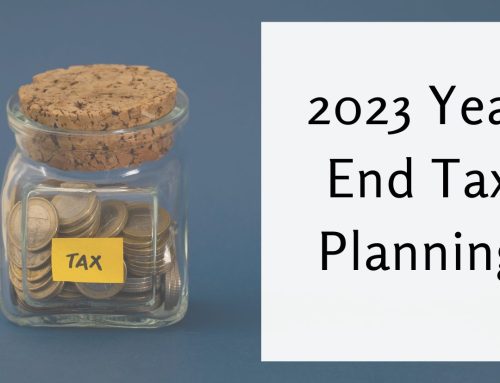The ATO have now published Practical Compliance Guideline (PCG) 2021/4 that deals with the ATO’s compliance approach to the allocation of professional firm profits. This replaces the guidelines and safe harbours that were issued in 2015. When the 2015 guidelines and safe harbours were released by the ATO, they were (erroneously) largely considered to apply to accounting and legal practices. PCG 2021/4 provides a definition of professional firm and individual professional practitioner (IPP). The ATO definition of professional firms and individual professional practitioner (IPP) is as follows:
Professional firms offer customised, knowledged based services to clients in a variety of professions which include, but are not limited to, accounting, architecture, engineering, financial services, law, medicine and management consulting (paragraph 20 of PCG 2021/4).
An individual professional practitioner (IPP) is an individual who provides services to clients of the firm, or to the firm itself, in circumstances where the IPP and/or associated entities have a legal or beneficial interest in the firm. Paragraph 30 of PCG 2021/4 states that a professional is a member of a recognised profession. The term “profession” is not defined by tax legislation…..[but the ATO] consider the following as indicators of a professional:
- Those who are required to be accredited and adhere to ethical guidelines in order to enter into and maintain practice in the relevant field
- Those who are accepted by the public as possessing special knowledge and skills in a widely-recognised body of learning, derived from research, education and training at a high level and who are prepared to apply this knowledge and exercise these skills in the interest of others.
- Their behaviour and practice are beyond the personal moral obligation of an individual
- They uphold a high standard of behaviour in respect to the services provided to the public and in dealing with professional colleagues
Before PCG 2021/4 can apply, the IPP (or the firm more generally) must pass two gateways. The first gateway is that the ATO expect there to be a sound commercial rationale for entering into and operating the arrangement or structure. Importantly, substance must match form. That is, the legal form and documentation must be consistent with the economic substance of how the professional firm operates in practice. For example, the mere assertion of asset protection for an IPP is not sufficient if the arrangement does not actually provide improved asset protection.
The second gateway is that there must not be certain “high-risk” features (such as financing arrangements relating to non-arms length transactions, exploitation of the difference between accounting standards and tax law, assignment of a partnership interest that is materially different from the principles set in Everett and Galland cases, multiple shares/units held by non-equity holders etc).
An individual professional practitioner (IPP) is an individual who provides services to clients of the firm, or to the firm itWhere the IPP and the professional practice can pass the two gateway tests, the risk assessment framework set out in PCG 2021/4 can be used by the IPP. The guidelines under PCG 2021/4 apply with effect from 1 July 2022 and the IPP should self assess under the guidelines each year. The self assessment process using the guidelines set out below should be documented each year as evidence that you have self assessed and as evidence as to your current risk level.
Before discussing the guidelines it is important to note that the ATO have three risk levels and these are identified as green, amber and red with:
Green = Low risk
The ATO will only apply resources to review your position where they are not satisfied that your self assessment is correct or they are concerned that higher risk features are present in your structure or arrangements.
Amber = Moderate risk
It is likely that the ATO will review your situation and this could include a further analysis of the facts and circumstances of your structure/arrangement.
Red = High risk
ATO will undertake further analysis on the facts and circumstances of your arrangement as a matter of priority. It is likely that the ATO would proceed to a full audit if considered appropriate.
ATO will undertake further analysis on the facts and circumstances of your arrangement as a matter of priority. It is likely that the ATO would proceed to an full audit if considered appropriate.
There are three risk assessment factors and these are:
- Proportion of Profit entitlement from the whole of the firm group returned in the hands of the IPP
- Total effective tax rate for income received from the firm by the IPP and associated entities
- Remuneration returned in the hands of the IPP as a percentage of the commercial benchmark for the services provided to the firm
Under each of these risk assessment factors there is a score attributable to the result. When self assessing you can chose to use risk assessment factors 1 and 2 only or you can elect to use all 3 factors. Depending upon which tests you use, your aggregate score is compared to the risk rating table to determine your risk zone. The risk rating table is as follows:
| Risk Zone | Risk Level | Aggregate Score (Factors 1& 2) | Aggregate Score Factors 1, 2 & 3 |
| Green | Low | Less than or equal to 7 | Less than or equal to 10 |
| Amber | Moderate | 8 | 11 and 12 |
| Red | High | Greater than or equal to 9 | Greater than or equal to 13 |
Risk Assessment Factor 1 – Proportion of Profit Entitlement form the Whole of Firm Group returned in the hands of the IPP
This risk factor provides a score based on the proportion of the profit entitlement that is included in the IPP’s personal income tax return as assessable income compared to the total amount of income to which the IPP and his/her associated entities are collectively entitled (whether directly or indirectly) from the whole of the firm group. This will include income entitlements from service entities and associated businesses.
The score table is:
| If proportion of profit entitlement > 90% | 1 |
| If proportion of profit entitlement greater than 75% but less than or equal to 90% | 2 |
| If proportion of profit entitlement greater than 60% but less than or equal to 75% | 3 |
| If proportion of profit entitlement greater than or equal to 50% but less than or equal to 60% | 4 |
| If proportion of profit entitlement greater than 25% but less than 50% | 5 |
| If proportion of profit entitlement less than or equal to 25% | 6 |
Risk Assessment Factor 2 – Total Effective Tax Rate for Income Received from the Firm by IPP and Associated Entities
The second risk assessment factor provides the IPP with a score based on the total effective tax rate paid by the IPP and his/her associated entities. The total effective tax rate is calculated using the following formula:

Where total tax paid by the IPP and associated entities of the IPP on professional firm income is the greater of:
i. The tax that would be payable on the firm related amounts (including income and associated deductions) assuming no other sources of income or deductions; or
ii. The amount being the income tax paid for the year less the amount of tax that would be payable if the firm related amounts were disregarded
The focus of this risk assessment factor is to calculate the effective tax rate paid by the individual professional and all associates who shared the income for a particular tax year. This calculation ignores other sources of income (dividends from unrelated third parties, interest income from unrelated third parties, net rental income/(loss)) and allowable deductions that the individual professional or his/her associates may be entitled to claim.
It is also important to note that fringe benefits are included in the total profit entitlement of the IPP as the fringe benefits are taken to form part of the IPP’s overall remuneration. Where the professional firm pays fringe benefits tax, the fringe benefits tax paid will be included in the total effective tax rate calculation.
The score table for risk factor 2 is:
| If total effective tax rate is > 40% | 1 |
| If total effective tax rate is > 35% but less than or equal to 40% | 2 |
| If total effective tax rate is greater than or equal to 30% but less than or equal to 35% | 3 |
| If total effective tax rate is > 25% but less than or equal to 30% | 4 |
| If total effective tax rate is > 20% but less than or equal to 25% | 5 |
| If total effective tax rate is less than or equal to 20% | 6 |
Risk Assessment Factor 3 – Remuneration Returned in the hands of the IPP as a Percentage of the Commercial Benchmark for the Services Provided to the Firm
Importantly you can elect to only use Risk Factor 1 and 2 in determining your risk zone. However, you have the option of using all three risk factors. If you choose to use all three risk factors, Risk Factor 3 will look at the arms length commercial benchmark for the IPP for the services they provide the firm and compare that to the remuneration returned in the hands of the IPP.
Unless you were to engage a remuneration specialist or an employment agency to provide you with a remuneration assessment for each IPP within the firm, self assessing the commercial benchmark for your services could be problematic due to the subjective nature of the factors that must be taken into account. Not only could this incur an unwanted cost, the results could also cause unwanted friction amongst the IPPs as the independent remuneration expert may suggest in his/her report that some IPPs are under remunerated while others are being over remunerated for services provided.
As such, we would expect that most professional firms and their IPPs would elect to utilise Risk Factors 1 and 2 only.
However, for completeness we have set out below the Risk Factor 3 table of scores:
| If remuneration returned by the IPP as a % of the commercial benchmark was > 200% | 1 |
| If remuneration returned by the IPP as a % of the commercial benchmark was > 150% but less than or equal to 200% | 2 |
| If remuneration returned by the IPP as a % of the commercial benchmark was > 100% but less than or equal to 150% | 3 |
| If remuneration returned by the IPP as a % of the commercial benchmark was > 90% but less than or equal to 100% | 4 |
| If remuneration returned by the IPP as a % of the commercial benchmark was > 70% but less than or equal to 90% | 5 |
| If remuneration returned by the IPP as a % of the commercial benchmark was less than or equal to 70% | 6 |
Action Required
There is no doubt that the ownership and remuneration structuring arrangements used by professional firms are on the ATO’s radar and have been for at least 6 years. This new PCG guideline issued by the ATO is a means of putting professional firms on notice again that their structures will come under review. The guidelines as set out in PCG 2021/4 will not commence operation until 1 July 2022. Taxpayers with pre-existing arrangements are able to continue to rely the suspended 2015 guidelines until 30 June 2022. If your circumstances would have been considered low risk under the suspended 2015 guidelines but your arrangements would have a higher risk rating under PCG 2021/4 the ATO will allow a further transitional period up to 30 June 2024 whereby those firms and IPPs can continue to apply the suspended 2015 guidelines.
Between now and 30 June 2022 it is going to be extremely important for you to review your structures and remuneration arrangements and make an assessment of where you are based on the new PCG 2021/4 guidelines. If the results of this analysis showed that you were within the Red or Amber risk zones then we would need to work with you to put in place strategies and structures that would allow you to move into the low risk Green risk zone.
At some point in the next 5 months we will look to engage with you to discuss the impact of PCG 2021/4 on your firm and the IPPs within the professional services firm.
In the meantime, if you have any queries or would like to discuss this in more detail, please do not hesitate to contact our office on 03 9629 1433 email the office.





